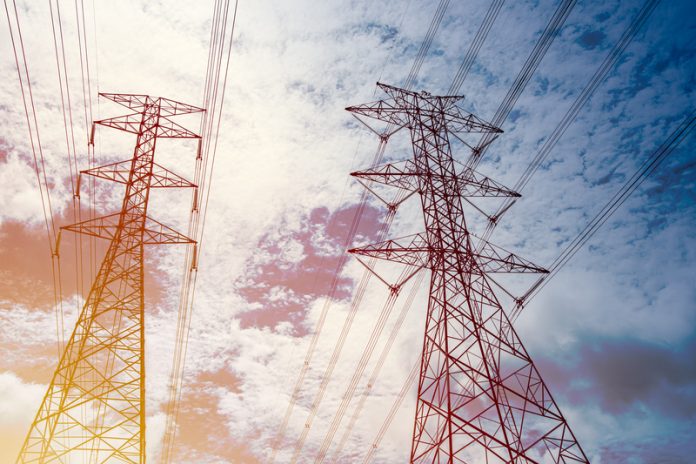Megan Warrender, Assistant Editor at Open Access Government, explores how Kadri Simson, European Commissioner for Energy is firmly set on achieving Europe’s ambitious targets for transforming the energy sector
As Europe finds its way through the COVID-19 crisis and starts to look beyond it, there is a need for EU policy to not only maintain immediate action but also strengthen its long-term vision. Various policies such as the Recovery Plan, the Climate Target Plan, the new revised TEN-E Regulation, bringing forward the Fit for 55 Package and the new Multiannual Financial Framework for Europe, (the highest ever EU budget), allow for a historic opportunity to build back better, for green investment, and for the green transformation of the energy sector in particular.
“Since almost day one of the pandemic, we have heard the same question being asked over again: “When will we be able to go back to normal.” When it comes to energy, we don’t want to go back to normal. Let’s not forget that our old “normal” was leading us to irreversible damage for our planet and way of life. COVID-19 has presented us with a once in a lifetime opportunity to leapfrog ahead in our target for climate neutrality,” states Kadri Simson, the European Commissioner for Energy.
With the Green Deal, Europe will spend the next 30 years on the road to climate neutrality, with the project foreseeing Europe to be a front-runner as the first climate-neutral continent by 2050. Furthermore, EU leaders have committed to reducing emissions by 55% before 2030.
In an article written by Commissioner Simson at the beginning of 2021 for Open Access Government, she stated that “the energy sector will play a crucial role in achieving our ambitious climate targets – both for 2030 and 2050. Let’s not forget that 75% of EU emissions come from the energy sector. Reaching our climate goals will mean creating a more modern and sustainable energy system.” Some of the energy centred goals to reach by 2030 include:
• Electrification needs to reach 30%.
• The rate of building renovation must double.
• The share of renewables in transport needs to reach around 24%.
• Oil consumption must go down by almost a third and gas consumption by a quarter.
“I enter 2021 confident that we can make further strides forward and step up to the challenges ahead,” added Commissioner Simson.
At the 10th high-level meeting of the EU Refining Forum in February 2021, Commissioner Simson highlighted some of the visible changes that will fuel a huge transition for the energy system in Europe.
• By 2030, we will already begin to see a visible change in the mix of transport fuels, and electric vehicles will be deployed for use.
• By 2050 transport fuels will be a mix of electricity, hydrogen, biofuels, biomethane and e-fuels.
• Overall, by 2050, we could be consuming over half of the energy in the form of electricity. And as we approach the middle of the century, gases and liquid fuels that make up the other half will be increasingly decarbonised.
• By 2050, technologies such as renewable hydrogen that now seem a distant dream will be an everyday reality.
Renewable hydrogen: A symbol for greater flexibility
In this age of immense transition, it is particularly vital to note the use of clean hydrogen to aid the revolution of energy systems. “Europe has the political, the financial and the market conditions to become the global powerhouse of hydrogen. The importance of this lies in that hydrogen is not just an energy carrier or a decarbonised alternative, but it can integrate various renewable sources. It can help store renewable energy. That way we can better manage our overall energy system,” said Commissioner Simson in a speech at the Conference on Hydrogen in the Central and Eastern Europe Region.
She further mentioned that when it comes to the clean hydrogen race, Europe is speeding up, which is why the Commission brought forward the EU Strategy for Hydrogen in July 2020. The strategy lays out Europe’s vision for:
- Quickly scaling up renewable hydrogen production.
- Driving down the cost.
- Boosting demand in hard-to-abate sectors.
These three main ideals are accompanied by a set of ambitious targets, such as 6 GW of electrolysers installed by 2024, and 40 GW by 2030. Pushing to reach these targets and achieving the hydrogen economy that is planned, will enormously benefit Europe’s economies, with analysis showing that every billion of investment in renewable hydrogen will create roughly 10,000 jobs along the supply chain.
Global cooperation
It is not just Europe’s economies and citizens that will benefit. The geopolitical context of European Energy relations is more important than ever, and it is necessary to shape the clean energy transition and the global energy system based on cooperation and partnership, to reflect Europe’s values and interests. The change of administration in the U.S. marks an expectation for renewed cooperation on European energy and climate goals. President Biden’s immediate actions on climate issues – including re-joining the Paris agreement – are a positive sign for Europe, and Commissioner Simson has stated that “we hope to organise an EU-U.S. Energy Council as soon as possible now that the new State Secretary and Secretary of energy is in office.” Furthermore, “building an energy partnership with Africa is a key strategic interest for our external relations,” she added.
To reach these many ambitious goals, the European Green Deal will help to steer and direct, alongside the need for annual investments for energy production and use to increase by around €350 billion per year compared with what Europe invested in the decade leading up to 2020, mainly focussing on buildings, transport, and the power sector.











